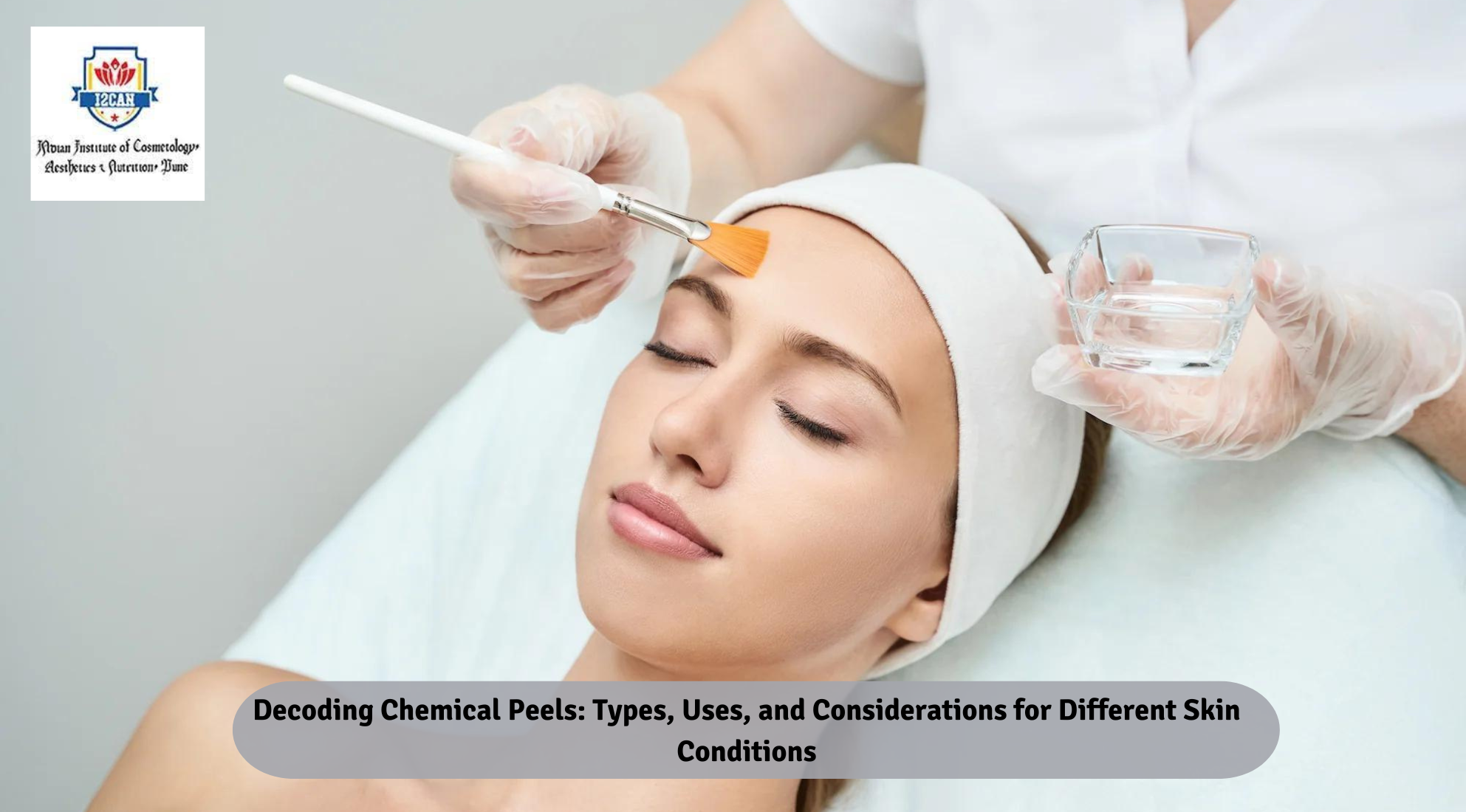Chemical peels have long been a staple in skincare routines, revered for their ability to rejuvenate and revitalize the skin. From combating acne scars to reducing hyperpigmentation and fine lines, these treatments offer a range of benefits for various skin concerns. However, navigating the world of chemical peels can be daunting, with numerous types available and considerations to keep in mind. In this comprehensive guide, we’ll delve into the different types of chemical peels, their uses, and considerations for different skin conditions.
Understanding Chemical Peels:
Chemical peels involve the application of a chemical solution to the skin, which causes exfoliation and peeling, ultimately revealing smoother, more radiant skin beneath. These treatments can vary in intensity, with superficial, medium, and deep peels offering different levels of exfoliation and skin penetration.
- Superficial Peels:
- Superficial peels are the mildest form of chemical peels, primarily targeting the outer layer of the skin (epidermis).
- They are typically composed of alpha hydroxy acids (AHAs) such as glycolic acid or beta hydroxy acids (BHAs) like salicylic acid.
- Superficial peels are ideal for addressing minor skin concerns such as uneven texture, mild acne, and dullness.
- They require minimal downtime, with patients experiencing mild redness and peeling that resolves within a few days.
- Medium Peels:
- Medium peels penetrate deeper into the skin, reaching the middle layer (dermis) to target more significant concerns.
- Common ingredients in medium peels include trichloroacetic acid (TCA) and glycolic acid at higher concentrations.
- These peels are effective for treating moderate acne scars, sun damage, and pigmentation issues.
- Patients may experience moderate redness, swelling, and peeling for up to a week following a medium peel.
- Deep Peels:
- Deep peels penetrate the deepest layers of the skin, providing dramatic results but requiring more extensive downtime.
- Phenol is the primary ingredient used in deep peels, effectively addressing severe sun damage, deep wrinkles, and scars.
- Due to their potency, deep peels are usually performed under sedation or anesthesia by a dermatologist or plastic surgeon.
- Recovery from a deep peel can take several weeks, during which the skin may appear red, swollen, and sensitive.
Uses of Chemical Peels:
Chemical peels offer versatile solutions for a wide range of skin concerns, making them a popular choice among individuals seeking skin rejuvenation. Some common uses of chemical peels include:
- Acne Treatment:
- Chemical peels help to unclog pores, reduce inflammation, and improve the overall appearance of acne-prone skin.
- Superficial and medium peels are often recommended for mild to moderate acne, while deep peels may be used for severe cases.
- Pigmentation Correction:
- Chemical peels can effectively lighten dark spots, sun spots, and melasma by exfoliating the top layers of the skin.
- Medium to deep peels are typically preferred for treating hyperpigmentation, as they target pigmented cells deeper within the skin.
- Anti-Aging Benefits:
- Peels stimulate collagen production, resulting in firmer, more youthful-looking skin.
- Medium to deep peels are particularly effective at reducing the appearance of fine lines, wrinkles, and sagging skin.
- Sun Damage Repair:
- Chemical peels help to reverse the effects of sun damage by promoting cell turnover and revealing healthier skin.
- Medium and deep peels can address sunspots, rough texture, and uneven skin tone caused by prolonged sun exposure.
Considerations for Different Skin Conditions:
When considering a chemical peel, it’s essential to take into account the specific needs and characteristics of your skin. Different skin conditions may require tailored approaches to ensure optimal results and minimize the risk of adverse effects.
- Acne-Prone Skin:
- Individuals with acne-prone skin may benefit from regular superficial peels to prevent breakouts and minimize scarring.
- It’s crucial to choose peeling agents that are non-comedogenic and have anti-inflammatory properties to avoid exacerbating acne.
- Sensitive Skin:
- Those with sensitive skin should opt for milder peels with gentle ingredients to avoid irritation and discomfort.
- Patch testing is recommended before undergoing a peel to assess skin tolerance and reduce the risk of adverse reactions.
- Aging Skin:
- Aging skin may benefit from medium to deep peels to target deep wrinkles, loss of elasticity, and sun damage.
- However, caution should be exercised, as deeper peels carry a higher risk of complications such as scarring and hyperpigmentation.
- Darker Skin Tones:
- Individuals with darker skin tones are more prone to post-inflammatory hyperpigmentation following chemical peels.
- Lower concentrations of peeling agents and shorter treatment intervals are recommended to minimize the risk of discoloration.
Conclusion:
Chemical peels offer an effective solution for addressing a variety of skin concerns, from acne and hyperpigmentation to aging and sun damage. By understanding the different types of peels, their uses, and considerations for different skin conditions, individuals can make informed decisions about incorporating these treatments into their skincare routines. Whether opting for a superficial refresh or a deep rejuvenation, consulting with a qualified skincare professional is key to achieving safe and satisfying results. With proper care and attention, chemical peels can help unlock smoother, brighter, and more youthful-looking skin for a radiant complexion that lasts.

